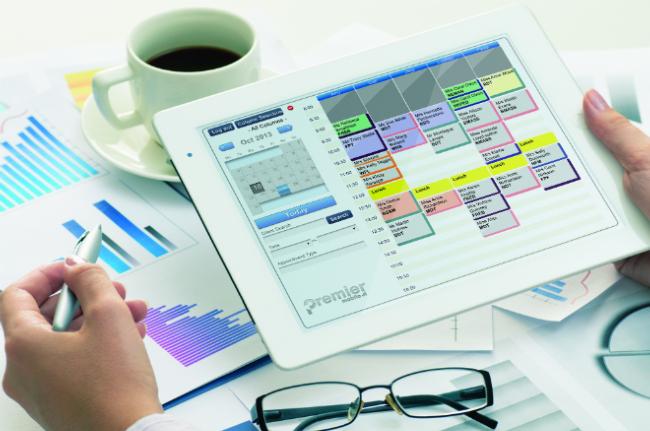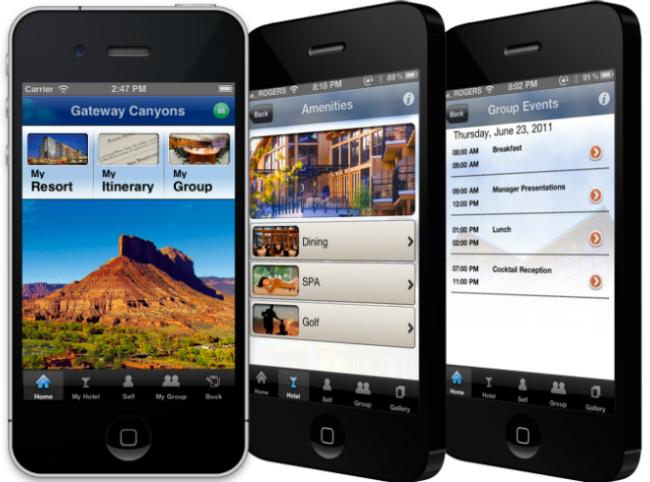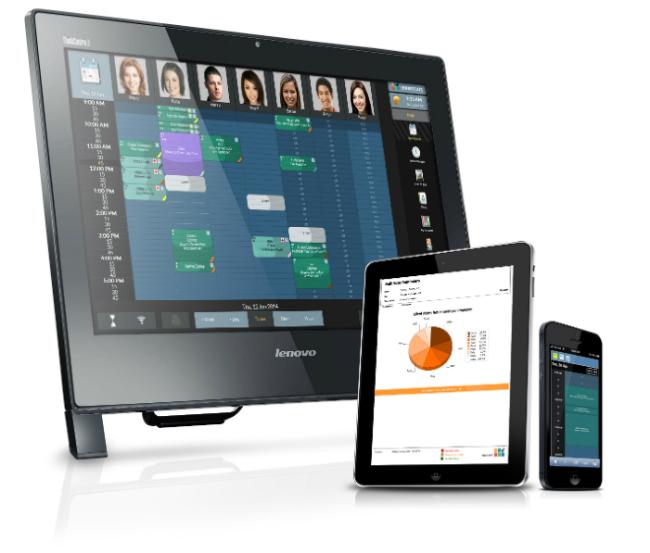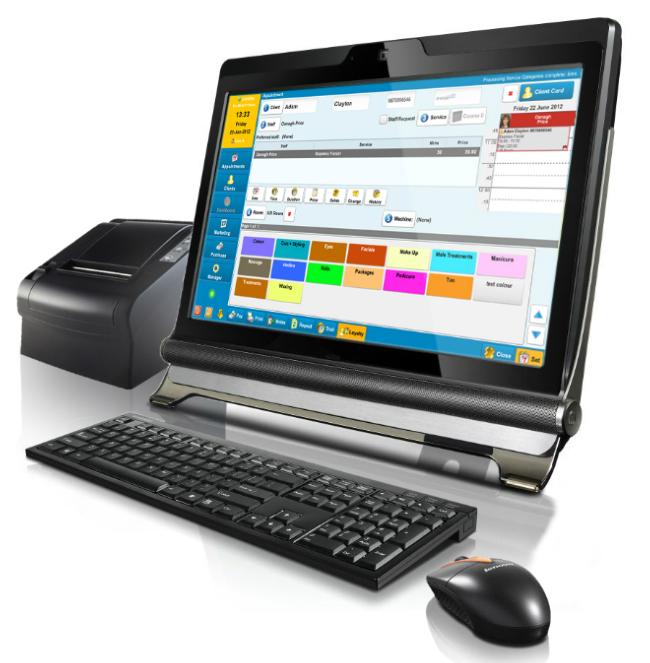Fit for purpose
Find out how the size and nature of your spa affects what your business needs from its software system
WORS NORA ELIAS
Regardless of the size, type or location of your spa, software is likely to be one of your biggest business outlays. Which makes the software provider you opt for and the way in which you use the system you purchase among the most important commercial decisions you’ll make.
And it’s not enough to simply do your research as far as ensuring that the provider you go with is reputable, delivering quality solutions and support. You also need to assess whether the features offered are right for your spa concept and clientele.
Day, hotel, resort and destination spas have different client-bases, visitor frequencies and customer spending patterns and are consequently likely to need different things from their software system, and to use it for different purposes. “
All spa software can do the basics, such as take reservations, but it’s about going beyond the basics and looking at what you’re going to need the software to do in your spa,” says Frank Pitsikalis, founder and chief executive of Canadian software company Resort Suite – which caters for sectors including spa, hotel and leisure.
It’s also important to ensure that the software provider has experience of working with businesses of your type and size. “Software vendors have often designed software for a particular type of business, and your needs will be different depending on if you’re a small or a large spa,” says Roger Sholanki, chief executive and founder of Canada-based software provider Book 4 Time.
“So make sure the vendor has experience supporting other clients similar to you in terms of size,” he adds. “And make sure that the vendor specialises in your market, because there are a lot of different flavours of vendors and software out there, and you need someone who specialises in your market sector.”

Image: Resort Suite
Daily considerations
For a day spa, this will probably entail partnering with a software provider that can help them build a strong repeat clientele. “Your typical day spa is going to have more of a core base of returning clients than a hotel or resort spa, where people go for a holiday and then leave, so their main focus will be on building loyalty among that local customer base,” explains Tony Tremain, director of change at Millennium Software, which has offices in the UK and the US.
“At Millennium, we really focus on loyalty programmes for day spas, allowing them to reward different behaviours they want to see in clients, such as referring guests to the spa or spending on retail.” Larger day spas, often popular with friends and families celebrating special occasions, also need a system that can accommodate bookings for a significant number of people.
“The reality of big day spas is that they will, for example, get hen parties of up to 20 people, so you need to make sure that the system can handle that, and can handle it in a way that is sensible and efficient for the operation,” says Adam Chatterley, UK director of Gumnut Systems International, which also has offices in Australia and the US.
A day spa chain should also, the experts add, look for a software solution that enables them to simultaneously implement a new policy, price or treatment across all its locations. “Spa chains will require a commulti-site solution with centralised control and reporting capabilities,” says Leonie Wileman, operations manager at UK-based Premier Software Solutions.
Paul Rose, marketing manager at Shortcuts Software, also based in the UK, agrees. “If you have six different spas across the country you would want centralised functions that, for example, mean an annual price increase is pushed down to all the sites at the same time,” he says.

Image: Premier
A united front
A core consideration for a hotel or resort spa is finding a software solution that will integrate smoothly and efficiently into the property management system used for the business as a whole. “If you’re a hotel spa, you’ll need to be able to hook into the hotel interface,” Tremain says.
Backing this up, Sholanki explains that: “Your finance people will also want to be able to access your revenue from the hotel system, so you’ll need to make sure that your vendor has the capability to communicate with your [hotel] system.” In fact, the brands recommend hotel spas to always choose a vendor with a proven track record of working well with the property management system.
“Make sure the spa software provider has a relationship with the hotel system,” Chatterley says. “And make sure you speak to other spas that have not only used the same software product you are intending to use, but have used it for the same purposes, and with any other system you are planning to pair it with.
Software is a significant investment, so you want to make sure you make the right decision,” he continues. “There is nothing worse than making the decision, only to then speak to someone else in the industry and finding out they had a bad experience with that system.”
Of course, resort and hotel spas may wish to entirely circumvent the potential problems of merging two software systems, by instead opting for one solution. “It could be that going for more of a resort type solution, which can provide everything from spa to golf and leisure bookings is the [best option],” Chatterley explains.

Image: Resort Suite
This is also what Pitsikalis would recommend hotel, resort and destinations spas to do. “Having individual software packages is often not a great solution, because, more and more, guests want to experience the entire property,” he says.
What guests today expect from a resort experience, particularly at the high-end spectrum of the market, is to be able to move from one segment of the business to another, without complications. “One thing we do really well is integrate multiple aspects of the guest experience, be it spa services, classes or other activities,” Pitsikalis says.
“Because guests don’t want to feel as if they’re going from one separate business to another, they want to be treated as the same person, with the same individual profile. And that can be hard when you’re dealing with these different silos of individual software.”
Naturally, however, not all hotels and resorts are in a position to change providers for the entire business simply because a new software solution is required for the spa. “Not all properties are going to be able to go in and put in a single package,” Pitsikalis says. “The larger properties or groups, the Fairmonts, Four Seasons and Jumeirahs of this world, already have a property management system as their global standard.”
In these cases, he adds, the solution comes back to the close integration of the two systems. “We have done a lot of work with [these clients] to integrate with their system at a guest profile level, so that when a guest makes a room reservation, we can pull that entire profile into Resort Suite and keep it synchronised with their profile in the hotel system,” he explains.

Image: Premier
Forward planning
Knowing what level of software to go for, how advanced you need it to be and how costly you can afford it to be, can be tricky. “It’s a difficult one, because if you’re a small spa, or you’re just starting out, you’re not going to want to spend £10,000 on the latest system,” Chatterley says.
“But equally, you always want to make sure that your system can grow with you.” Connor Keppel, marketing manager for software company Phorest, with offices is in the UK and Ireland, says you need to make your investment with possible future expansion in mind.
“You kind of have to future proof,” he says. “Even if you have no intention of opening a second spa, you should get a type of software that will allow you to manage more than one branch and to manage it effectively – just in case.” Sholanki adds that you should not only consider if you want to expand, but the way
in which you foresee it happening. “If you want to go global in three to four years, make sure the vendor you go with today is international and has a presence in the countries you’re planning to expand to,” he says.

Image: Shortcuts
“And if your goal is to franchise in a few years, make sure the vendor has some capability to support franchises.” However, Wileman explains that failing to plan ahead is a mistake she often sees spas make.
“Often, when looking for a software solution, spas don’t ensure that the system is scalable and [can adapt] as their business requirements change.” Even if you do settle on a more affordable and less sophisticated system that does not, Chatterley says, mean you cannot still have one eye on the future.
“If you are going to start out with a more lightweight online solution, for example, I would make sure that the provider also has a more full-blown solution, should your business grow,” he says. “I would also make sure that they have some sort of upgrade procedure in place, so that if you do decide to change systems, they can just pull all your data into the new system, so you don’t have to start again from scratch.”
Support system
Irrespective of the software system you choose, you will at times have queries or encounter problems, which means you’ll need support. The level and form of support offered varies depending on the solution you opt for, ranging from chat-only support to options with a monthly support allowance and unlimited 24-hour support. Which offer you select does of course depend on your needs and budget, but there are a few key factors to keep in mind, no matter what the characteristics of your business are.
“Support hours need to reflect the opening hours of your business, whether this means a standard support: Monday-Friday, 9am-5.30pm, or a more premium support: seven days a week, 8.30am-8.30pm,” Wileman says. “This will give you peace of mind.”
Chatterley, meanwhile, recommends always going with a vendor that offers support outside of traditional business hours. “The issues you’re going to have will often be when you come in, in the morning, and can’t open your computer system up or at the end of the day, when you need help cashing up,” she says. “So make sure there is some sort of solution in place for support outside of normal working hours.”

Image: Phorest
Keppel advises spas to look for a software provider with staff that exclusively deal with support issues. “Ask if they have a dedicated support team,” he says. “In a lot of software companies, the support staff are multi-functional and are also the guys out on site doing instalments. What you want is a team that only does support, all day.”
For Sholanki, ensuring the appropriate amount of support for your business goes back to choosing the right provider in the first place. “If you’re a small day spa, you’ll most likely pick an online vendor that provides chat support and tutorials.
However, if you’re a large spa, you most likely need 24/7 support and more hands-on training,” he says. “So assuming you’re picking the right vendor, someone that specialises in your market and business size, you’ll get the right support for your needs.”
Support also includes training and the ideal scenario is a provider that offers a diverse range of training options to suit your business needs. “Training on site and on the phone is of course always available, but that’s not always efficient or cost-effective for the business,” Tremain says. “So we also record webinars and seminars, that we publish on our website and that customers can watch whenever they like.”
![]()
Image: Salon Tracker
Solid setup
A common denominator for all spas, whether day, hotel, resort or destination spas, is that certain mistakes that are often made. “Purchasing software, especially if it’s the first time, can be quite daunting and the most common mistake, I would say, is not venturing outside of their comfort zone,” says Rachel Scott, sales and marketing manager at UK-based software vendor Salon Tracker.
One mistake Shortcuts frequently encounters is, Rose explains, that businesses don’t look into the available options as much as they should, before purchasing a system. “Some owners don’t do as much research as they should, and I fairly often come across the attitude that all software is the same,” he says.
Not only are many spas not as thorough in their research as they should be, they often also don’t spend as long as advisable on the installation. “The main mistake for me would be the amount of time they spend setting up the new system,” Chatterley says.
People can put quite a lot of time and effort into selecting a new system, but they don’t commit to the training sessions and to the setup side of things as much as they should.”
This, he adds, is something he would like to see change. “I’m a firm believer in spending twice as much time on the setup as you think it’s going to need, because if you set the system up right, it will pay you back over the years that you use it.” Setting the system up correctly includes putting a strategy in place from the beginning, for what you want to get out of it.
“Have a clear plan in place from day one, for what information is useful for your business and the information you want to capture from your clients, and make sure everyone in your team does capture that data, from every single client,” Chatterley says. Sound advice for any spa, regardless of size, type and location.

